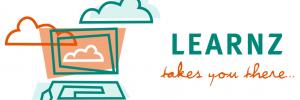Science teacher inspired by US experience
05/03/2015Sutapa Mukund was one of the first two recipients from New Zealand to receive the FDAT teacher award in 2014.
 Left: Su Mukund with Betsy Devin Folitz, Programme Officer, US Department of State of Educational and Cultural Affairs.
Left: Su Mukund with Betsy Devin Folitz, Programme Officer, US Department of State of Educational and Cultural Affairs.
From biometrics to brainstorming, science teacher Sutapa Mukund had an enlightening experience last year when she travelled to the US on a Fulbright scholarship.
The Fulbright Distinguished Awards in Teaching (FDAT) is a four-month programme for New Zealand primary or secondary teachers to participate in an intensive professional development programme in the United States. Two awards are granted each year.
Administered by the Institute of International Education (IIE) and supported by the New Zealand Ministry of Education, the Distinguished Awards in Teaching programme is one of numerous Fulbright initiatives established in 1946 under legislation introduced by former United States senator J. William Fulbright. Fulbright believed that through an understanding between cultures, peace could be fostered.
FDAT programme components include:
- Enrolling in advanced or graduate level classes at the host university, which for the 2014–2015 programme was Indiana University (IU), located in Bloomington, Indiana
- Designing and completing a ‘capstone project’ (an intensive research experience or assignment)
- Observing classes, team-teaching and/or conducting seminars or workshops in local schools for US teachers and students
- Engaging in other teaching-related activities.
Sutapa, from Papatoetoe High School in Auckland, writes about her experience:
My capstone project was Making Learning REAL: Retaining and Engaging All Learners in Secondary Science Classrooms.
The intention of this project was to understand and analyse best practices of teaching as observed in the classrooms of various schools in the US. The project also examined qualitative data from learning conversations with both educators and learners, to understand how innovative curriculum and pedagogical methods practised there are used to motivate students to follow careers in STEM subjects by connecting the subject to the real world. The intent was to incorporate the ideas from my research and findings into my classroom activities.
Traditional teaching methods, where the teacher is at the front of the class and delivers lectures in a didactic manner, is still the norm in many schools the world over. But teachers are now being expected to take the role of a facilitator and encourage students to be involved in a collaborative environment. This allows for creativity and provides intrinsic motivation for learners to be challenged and inspired to learn or discover things for themselves.
It is strongly believed and agreed by most educational researchers that early interest in science would encourage a larger population of students to pursue STEM later. STEM is a curriculum based on the idea of educating students in four specific disciplines, namely science, technology, engineering and mathematics using an interdisciplinary and applied approach. This allows for a cohesive education based on real-world applications.
Therefore, areas of professional development and curriculum delivery that have been of interest for me in the US include PLTW (Project Lead the Way), PBL (Project Based Learning), and POGIL (Process Oriented Guided Inquiry Learning). Classes in which teachers engaged the students with other inquiry-based activities were of special interest during my capstone project.
This descriptive research project involved observations over a time frame of four months (August to November 2014) of various science classes at a public school, namely Bloomington North High School in Indiana State, and one-off visits to a number of magnet, as well as charter, schools including Columbus Signature Academy, elementary school, and high schools, The Jones Prep College (magnet school in Chicago) and the Charles A. Tindley School (charter school in Indianapolis). Schools in various states follow either National Standards or State Standards, depending on the school administrative policies.
The main aim of this project was to understand specific curricula, pedagogical methods, professional development and techniques in innovative teaching.
Bloomington North High school is a public school in Bloomington, Indiana, and follows the Indiana State Standards. The school has a strong reputation in Bloomington city for producing academically good results as it is backed by a strong science department. The school imparts lessons in science in various disciplines, including biology, chemistry, earth science, environmental science, and physics through regular classes, honours classes and AP (Advanced Placement) classes. In addition to the ones mentioned above, the school also offers the unique PLTW (Project Lead The Way) curriculum. This programme includes STEM science courses in biology at four levels, beginning with the foundation course of PBS (Principles of Biomedical Sciences), leading to HBS (Human Body Systems), MI (Medical Interventions) and BI (Biological Innovations).
As this was unquestionably an innovative programme compared with courses offered in secondary schools in New Zealand, I wanted to shadow the PLTW classes and students and understand how and why this course is linked radically to STEM careers and success in college. In addition to regular visits to the science classes at Bloomington North, I also visited schools offering PBL and Universal Design for Learning (UDL) at the Columbus Signature Academy Magnet schools in Indiana. POGIL was another pedagogical method that was explored during my capstone project.

Project Lead the Way
The entire approach of the PLTW curriculum is novel and stimulating because of the thematic approach to teaching. This curriculum offers college credits to students who pass the end of year examinations administered by PLTW nationwide in the US, making it both challenging and exciting.
The research information on PLTW was gathered from classroom observations at Bloomington North High School. What makes this programme so innovative is the fact that the teacher is largely a facilitator and the students approach each topic as an inquiry-based 12-step design process, where the emphasis is to define a specific problem, brainstorm, research and generate ideas. The students then explore feasible possibilities to make a prototype, test and evaluate the same. This ensures that the knowledge and content is firmly embedded through a variety of authentic real-life scenarios that appeal to the student and enable them to make genuine and realistic connections. An exemplar to understanding the PLTW approach to learning is explained through an activity observed in a ‘human body system’ class.
The students in this class were taught the basics of biometrics. The key concept of biometrics that the students were expected to understand from the PLTW curriculum requirement was “physical and behavioural characteristics can be used to confirm or authenticate identity”. The performance objective required by the student was to “evaluate current technology used to verify and protect identity and design a biometrics plan specific to a real-world situation”.
Some biometric specimens used included:
- face: analysis of facial characteristics
- fingerprint: analysis of an individual's unique fingerprints
- hand geometry: analysis of the shape of the hand and the length of the fingers
- retina: analysis of the capillary vessels located at the back of the eye
- iris: analysis of the coloured ring that surrounds the eye's pupil
- signature: analysis of the way a person signs their name
- vein: analysis of the pattern of veins in the back of the hand and the wrist
- voice: analysis of the tone, pitch, cadence and frequency of a person's voice.
This was followed by an inventive activity: working in groups of four, students were to put together a cost-effective security plan for any one of the following:
- Airports to check that a traveller was on a genuine passport.
- Hospitals where babies were often kept in nurseries and had to be returned to parents from time to time.
- Theme parks that needed to ensure that visitors were not sharing annual passes.
- Banks that had to have added security systems for their phones and ATM machines.
- Government agencies wanting to protect the nation’s secrets by ensuring that only authorised personnel had access to vaults or lockers for important documents.
This unique lesson at Bloomington North High School involved dynamic and vigorous conversations linking physics to sound recordings, iris colour to genetics and chemistry, DNA testing and blood sampling to biology and chemistry, and permutations and combinations to banks and ATM machines, using mathematical algorithms.
The practical aspect to this topic was running DNA electrophoresis gels that use biotechnology to determine and understand the use of specific length DNA matches. Compared with a parallel biology course, students were motivated and keen to participate.
I noticed that students within a group gravitated to their own area of interest – whether that was mathematical computing, note-taking and writing, or suggesting brilliant ideas during brainstorming sessions. Students were confident in arguing their own points as the discussions became more intense, working almost as an executive team of a company through this simulated activity. Critical thinking and motivation were the intrinsic factors that enabled the group to work effectively in this exciting project.
In addition to the school visits, my stay in the US included classes at Indiana University. The courses included “Instructional strategies for thinking, collaboration, and motivation” and “Teaching secondary school science”.We took part in a myriad of activities including seminars, picnics with host families, attending various world-class performing arts shows like ballets, musicals, plays and concerts. Two of the conferences I attended in Florida and Indianapolis included the NSTA (National Science Teachers Conference) and the PLTW National Summit.
I’ve returned with a multitude of ideas that I am hoping to implement over a period of time in my classes. These will hopefully come to fruition during my next challenge: a Royal Society STLP (Science Teacher Leadership Programme) in terms 3 and 4 this year.
I am very grateful for the wonderful and able staff who coordinated this programme with such superior efficacy: Dr Holly Emert, the assistant director, and Rebecca Zook, the senior programme associate of IIE (Institute of International Education). I would also like to thank Dr Patricia Kubow, director at the Centre of Educational Development and Research at Indiana University and her team, and both my school’s board and principal, Peter Gall, for allowing me to pursue my award and its implementation.
- Su Mukund is a science teacher at Papatoetoe High School, Auckland.
- Read more about Fulbright Awards in New Zealand, including the Distinguished Awards in Teaching programme, here.




















 NZASE peer reviewed
NZASE peer reviewed




Post your comment
Comments
As a teacher myself , I know that this is a tremendous opportunity . Sutapa has earned every bit of this scholarship and today this experience will kindle a new thirst for knowledge and for a better understanding of learning .
Posted by Neela Edwards, 05/03/2015 3:14pm (11 years ago)
No one has commented on this page yet.
RSS feed for comments on this page | RSS feed for all comments